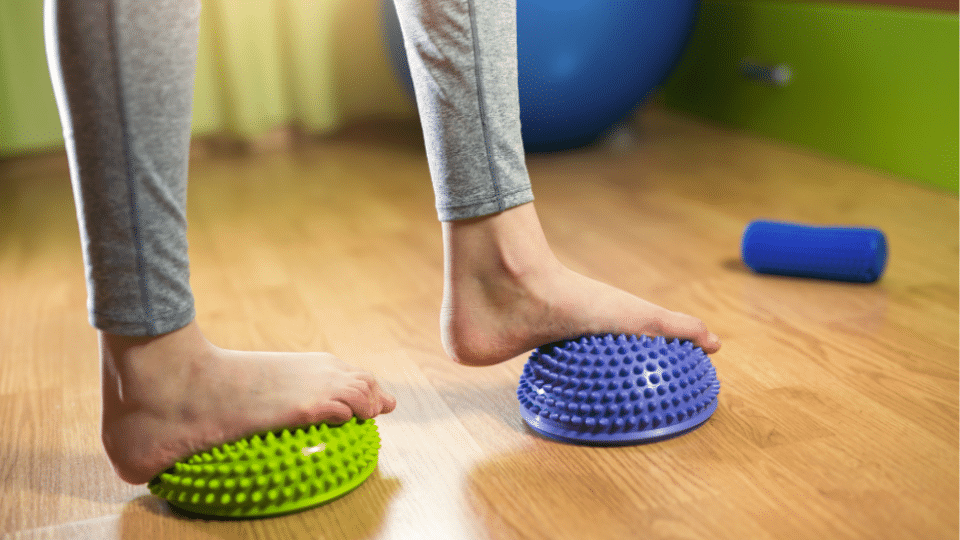Your feet carry you through every step of your life, so when something feels “off,” it can affect far more than just your toes. One of the most common foot conditions podiatrists diagnose is flat feet (also called fallen arches or pes planus). While some people never notice any problems, others experience pain, swelling, and even changes in posture.
So, how do I know if I have flat feet? Let’s explore the signs, causes, and treatment options, plus the next steps you should take if you think this condition might be affecting you.
What Are Flat Feet?
Flat feet occur when the arch on the inside of the foot is very low or absent, causing most or all of the sole to touch the ground when standing.
There are two main types:
- Flexible flatfoot – The arch is visible when the foot is lifted but disappears when standing. Common in children and often not painful.
- Rigid flatfoot – The arch is absent whether sitting or standing, and this type is more likely to cause discomfort or functional problems.
According to the Cleveland Clinic, flat feet can be present from birth or develop later in life due to injury, tendon weakness, or medical conditions.
How Do I Know If I Have Flat Feet?

Here are some of the most common signs and symptoms:
- Visible low or absent arch: When standing, the entire sole appears to touch the floor.
- Foot pain or fatigue: Achiness in the arches, heels, or ankles—especially after standing or walking for long periods.
- Swelling along the inside of the ankle: This may point to strain in the posterior tibial tendon, which supports the arch.
- Overpronation: Feet roll inward when you walk, causing ankles to tilt and affecting balance.
- Shoe wear patterns: Shoes wear out faster on the inner sole.
- Leg, knee, or back pain: Flat feet can alter posture and alignment, leading to strain beyond the foot itself.
If you’re still wondering, try a simple self-test at home: the “wet footprint test.” Wet the sole of your foot, step onto a piece of paper or concrete, and look at the imprint. If you see almost the entire sole without much of a curve on the inner side, you may have flat feet.
What Causes Flat Feet?
Flat feet can develop for a variety of reasons:
- Genetics: Many people inherit the condition from their parents.
- Childhood development: Some children’s arches never fully form.
- Tendon problems: Weakness or injury to the posterior tibial tendon is a major cause of adult-acquired flatfoot.
- Medical conditions: Obesity, rheumatoid arthritis, diabetes, and pregnancy can increase risk.
- Injury: Trauma to the foot or ankle may damage the structures that support the arch.
- Age: Natural wear and tear can cause arches to collapse over time.
The Mayo Clinic emphasizes that while flat feet are often harmless, they can lead to pain and functional problems in some people.
When Flat Feet Become a Problem
Not everyone with flat feet experiences symptoms. However, you should seek professional advice if you notice:
- Persistent foot or arch pain
- Swelling or stiffness in the ankles
- Difficulty standing for long periods
- Pain radiating into the knees, hips, or lower back
- Changes in balance or mobility
If ignored, flat feet can contribute to conditions like plantar fasciitis, Achilles tendonitis, bunions, and arthritis.
Diagnosis: What to Expect
If you suspect you have flat feet, a podiatrist will:
- Examine your foot posture while sitting, standing, and walking.
- Check for flexibility of the arch (distinguishing between flexible and rigid flatfoot).
- Evaluate gait mechanics to see how flat feet affect your movement.
- Order imaging tests (X-rays, MRI, or CT scan) if needed to check bone alignment or tendon health.
Next Steps: How to Treat Flat Feet
Treatment depends on whether you have symptoms. If you are pain-free, no treatment may be necessary. But if discomfort is affecting your daily life, here are proven options:
Supportive Footwear
Shoes with proper arch support and a firm heel counter help reduce strain. Avoid flat shoes, flimsy sandals, or worn-out sneakers. Learn more in our guide Shoes, Shoes, Shoes.
Orthotics
Custom orthotics provide tailored support, correcting overpronation and distributing pressure evenly across the foot.
Stretching and Strengthening Exercises
Targeted exercises can improve flexibility and reduce pain. Stretching the Achilles tendon and strengthening the posterior tibial tendon are especially effective.
Weight Management
Excess weight increases pressure on the arches. Maintaining a healthy weight can reduce symptoms.
Medications and Therapy
Over-the-counter pain relievers or anti-inflammatory medications may help. Physical therapy is often recommended to improve foot mechanics.
Surgery
In severe or persistent cases, surgical options may be considered to realign bones, repair tendons, or fuse joints. This is typically reserved for patients who do not respond to conservative treatments.
Living with Flat Feet
Flat feet do not always require treatment, but they should not be ignored if pain or mobility issues develop. Early intervention can prevent the condition from worsening. The NHS notes that supportive footwear and exercises are often enough for most patients (nhs.uk).
If you are unsure whether your foot pain is due to flat feet, or if you have noticed changes in your gait, the best next step is to schedule an evaluation with a podiatrist.
Conclusion: Take the Next Step Toward Healthy Feet
So, how do I know if I have flat feet? Look for visible low arches, pain in your feet or ankles, uneven shoe wear, and swelling along the inside of your ankle. While some cases are harmless, others can lead to discomfort or complications if untreated.
At Fall Creek Foot & Ankle, our podiatry team can assess your arches, explain your options, and create a personalized treatment plan. From footwear guidance and orthotics to advanced care, we help you walk comfortably and confidently again.
Schedule your appointment today and let us support every step of your journey to healthier feet.
